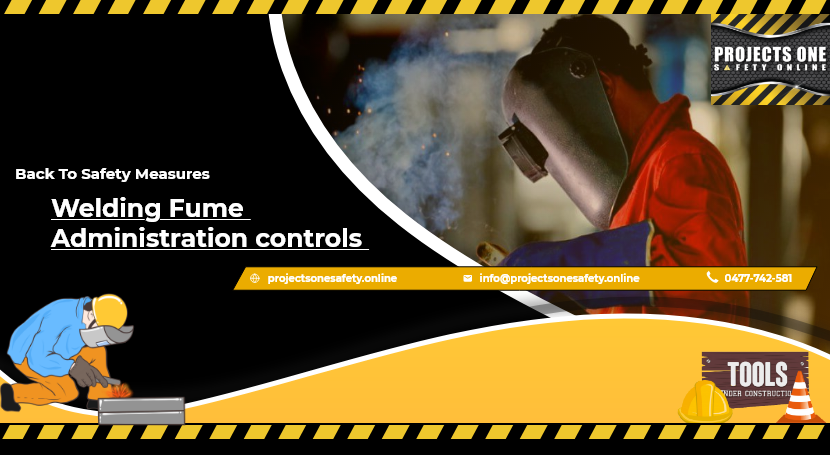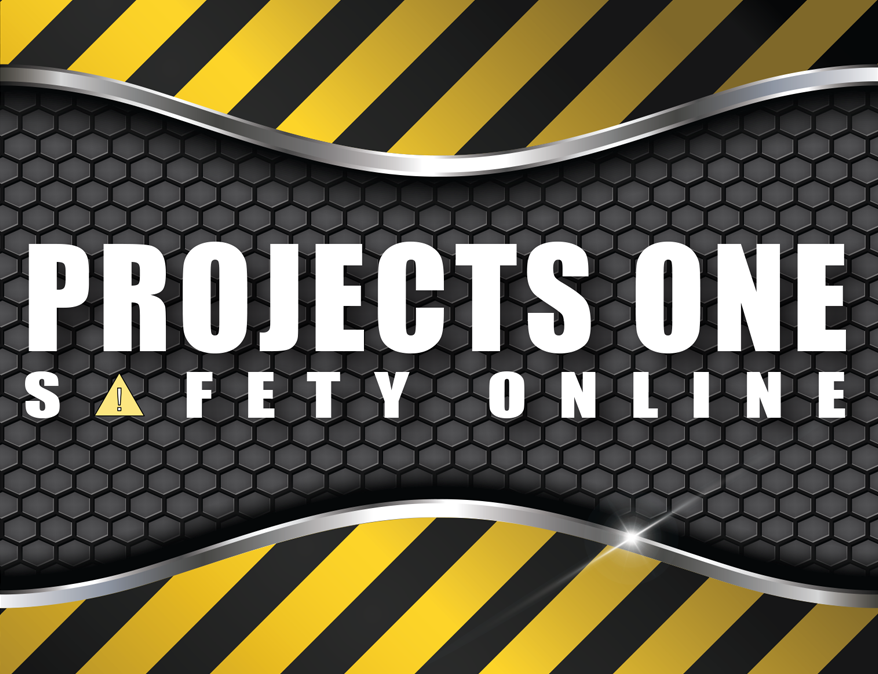
Welding Fume – Administration controls
It Is Time To Put Welding Fume Under The Spotlight!
The International Agency for Research on Cancer (IARC) reclassified welding fume to ‘carcinogenic to humans’ in 2017. Since this change many workshops and onsite welding crews have made drastic changes to their safety procedures, however many have missed the mark and could possibly be putting their workers at serious risk!
If you are a welder or employer of welders and you have not reassessed your risk assessment recently, (assuming you have one, and if not, Projects One Safety Online can help with that) now is the time to get started.
Administration Controls To Help Keep Your Staff Safe From Welding Fume
Written by, Wendy Bishop, creator of Projects One Safety Online, the ‘simplifier’ of all thing’s safety
If you are looking for more information the Safe Work Australia Welding Processes Code of Practice July 2020 and Australian Welding Supplies has a number of documents you can download that have great practical information to help. (POSO is not an affiliate of AWS and cannot guarantee the accuracy of the documents). The list below is only a guide and as the PCBU you will need to ensure you have all the necessary controls in place to eliminate or minimise the risk.
Welding fume can stay in the air for up to 2 days, that is a large amount of extremely dangerous welding fume to avoid breathing in over a year. I cannot help you pick out the perfect welding helmet or ventilation system, you need to do your own due diligence to find the best that suits your situation. However, I can help you look at the administration controls you will need to help lower the risk of your team becoming seriously ill from welding fume.
We all know that administration controls are an important part of the Hierarchy of Controls, they cover areas like training, supervision, vehicle and equipment maintenance, signage, and safe work procedures just to mention a few.
Administration controls
Making your workplace safe requires good knowledge of safety requirements. Here are a few tips to get you stated:
1. Learn as much as you can about the hazards created by your welding processes. The more knowledge you have, the better equipped you are to minimise the risk. Understand your legal requirements as a PCBU for keeping your workers safe, have a read of Safe Work Australia Welding Processes Code of Practice July 2020 as a good starting point.
Risk Assessment or Safe Work Method Statement
2. Identify the hazards and understand the type of fumes that are created in your workplace, know their source and health effects.
3. Assess the risk, the impact caused to a person’s health should they be exposed to welding fumes. Consider the consequences against the likelihood.
4. Control the risk, update your knowledge on new procedures, products, PPE, and services available. Talk to industry experts and company representatives to gain a good understanding of all products on the market. There is a lot to consider. Here are just a few things to get you started:
- HIERARCHY OF CONTROLS, look at the possibilities of eliminating, substituting, and isolating your welding work. Work out how to use engineering to minimise the risk such as ventilation systems. Administration controls and PPE is discussed later in the article.
- Consult, cooperate, and coordinate activities with all other persons who have a work health or safety duty in relation to the same matter, check if there are other teams onsite.
- Consult your welders and other workers directly affected by welding hazards, it is their health you are trying to protect. Consulting your team ensures you are using the knowledge they have.
- Take into consideration the requirements of your workers and the environment in which your team are working, before choosing new ventilation systems Personal Protective Equipment (PPE), or Respiratory Protective Equipment (RPE). In most cases PPE//RPE is worn by workers when welding to supplement higher levels of controls such as ventilation systems or administrative controls.
- When you are investing in safety the cheapest may not be the best. Check products meet the Australian Standards
5. Review and improve control measures frequently.
- Inspect the control measures and ensure they are being used and are working
- Check control measures have not created new hazards or increased risk in other areas
Once you have your Risk Assessment or Safe Work Method Statement completed and your control measures in place, you need to update the rest of your safety administration controls. Let us take a quick look at a few documents you will need:
6. Training record – Complete a training record to keep track of all training workers undertake, update training on a regular basis and update your records. All workers directly affected by welding fumes need to be trained:
- Workers need to fully understand the dangers of welding fumes and how to stay safe when working around welding fumes
- Workers need to be trained in the correct use of PPE/RPE and how to repair, maintain, clean and store equipment
7. Supervision – Ensure all inexperienced and young workers are supervised, keep notes on your risk assessment or toolbox/prestart meeting
8. PPE/RPE register – Keep track of all PPE/RPE, requirements, including expiry dates and maintenance
9. Maintenance records – Maintenance of ventilation systems and associated equipment is an important part of keeping your workers safe. Keep a record of all maintenance and repairs completed on the equipment and make reminders to ensure the machinery is maintained on a regular basis.
10. Health monitoring records – If you are required to monitor the health of your workers you will need to keep clear and concise records. Please read Safe Work Australia Welding Processes Code of Practice July 2020 as it outlines when health monitoring is required.
11.Safe Operating Procedures/Safe Work Instructions –SOP/SWI form part of the procedure for training your workers in the safe use of a welder, welding procedures, PPE/RPE, confined spaces…
12. Safety Data Sheets (SDS) – Gasses and welding rods should come with an SDS, which needs to be placed on a Hazardous Substances Register. Projects One Safety Online has a large SDS data base, easily accessible from the data base.
13. Hazardous Substances Register – All SDS must be listed and available to all workers that may be directly affected by the Hazardous Substance.
Projects One Safety Online can help with many of these documents, if they are not already part of our system, the team here at Projects One Safety Online is more than happy to create one for you. All you need to do is ask.
Remember, every morning as you prepare for work ask yourself, what is different about today? If something is different you need to revise your safety!





